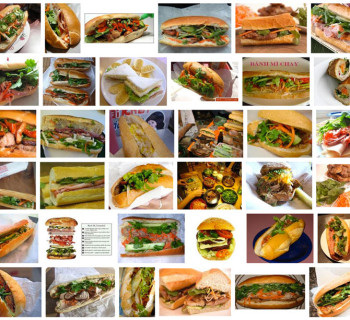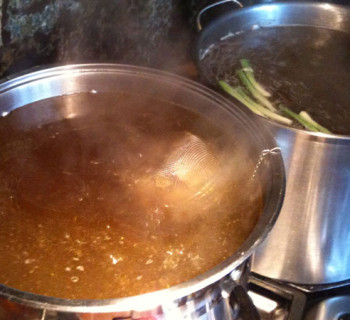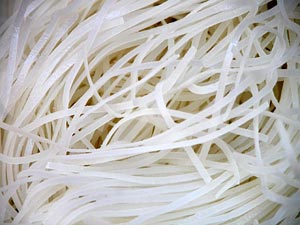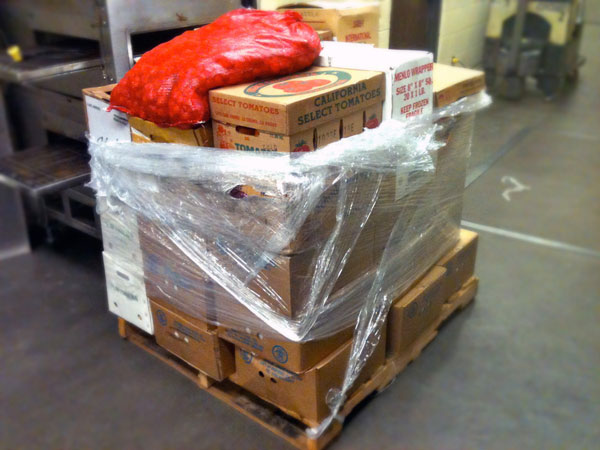 Updated 03-29-19. So what are some of the most important aspects of running your own pho restaurant?
Updated 03-29-19. So what are some of the most important aspects of running your own pho restaurant?
Having both good customer service and high food quality is important.
Telling the public that your pho restaurant exists to serve them and how they can find you, that's important.
Having happy, caring and well-trained employees, that is also important.
How about efficient operation and clean, safe facility and equipment? Yeah these are all important too.
In this article, however, I'll discuss another very important aspect of running your pho restaurant: controlling and managing your food costs. Because, if not managed correctly, food costs can easily make or break your pho restaurant.
What Ingredients Do You Need For Your Pho Restaurant
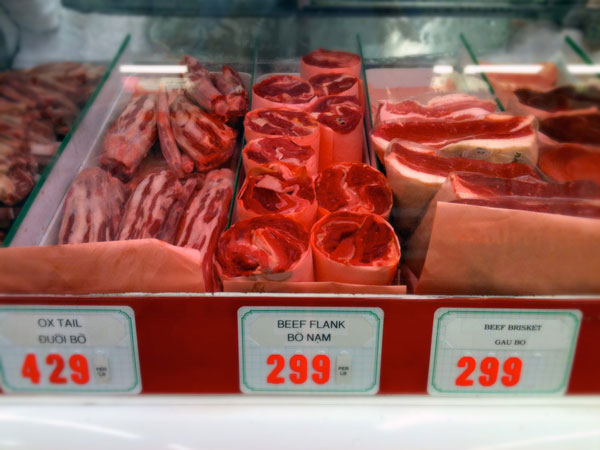 Regardless of your pho recipe, getting ingredients for pho is straightforward if you are located in large metro areas. It is even easier if you're in or near a large Vietnamese or Asian communities. You can get supplies from any of the large Asian supermarkets or better yet from Asian restaurant food suppliers.
Regardless of your pho recipe, getting ingredients for pho is straightforward if you are located in large metro areas. It is even easier if you're in or near a large Vietnamese or Asian communities. You can get supplies from any of the large Asian supermarkets or better yet from Asian restaurant food suppliers.
In general, if you are in a more "remote" area where you don't have a large Asian market, then the following items may be harder to get, or they can be much more expensive if you can get them:
- Beef bones
- Tendons and tripe
- Pho noodle
- Brisket (with the correct cut)
- Pho spices
- Nuoc mam fish sauce
- Fresh Thai basil
- Culantro
Most pho restaurants do not serve just pho though. Nowadays a typical pho restaurant also serves other Viet dishes as well. By the way I know of very few pho restaurants that serve just pho, plus a list of beverages, and they do brisk business all day. Here's a review I did of Pho Hoa in San Diego back in 2009, but amazingly everything is still true today except for the price of course. It's still very affordable pho and the dining room is almost always full.
But I digress. Back to my point about pho restaurants serving other Viet dishes. Those dishes will require harder-to-get ingredients. For example, if you decide to serve banh mi sandwiches on your menu, then you'd better be ready to bake the banh mi baguettes yourself, or have a local bakery bake them for you. In the end, your recipes will determine if you can actually open a pho restaurant in the area that you want, or how practical it may be. Therefore you need to concentrate on your menu items and what is possible for your business.
Which Vendors Will You Do Business With
In almost anywhere you open in the U.S., you can get national distributors like the Syscos and the FSAs and the US Foodservices, or you can search out the smaller local distributors. If you can, take advantage of the large services as much as possible since they give you the convenience sometime not matched by a smaller supplier, such as online ordering and payment centers, larger quantities if you need them, and better service in many cases.
On the other hand, if available, your Asian suppliers and supermarkets can give you exact ingredients that you need instead of a substituted brand. They may also have better prices on specialized items, and they speak your language. Whatever you do, quality, price and dependability are some of the things you need to compare among the suppliers. Below is a table comparing the pros and cons of the two types of suppliers. This is a simple list, but if used correctly, it can save you thousands of dollars.
Pho Restaurant Supplier Attribute Comparison
Table comparing the two types of suppliers for pho restaurant.| Attributes/Features | National/Large Suppliers | Local/Ethnic Suppliers |
|---|---|---|
| Ordering, Payments | Online, any time of day, automated Credit terms available | Manual phone, emails, and fax orders Cash/checks only |
| Order History, Quick Reorder | Lots of past or historical information Accessible anytime of day | Nonexistent, or need to send a previous order |
| Ingredients Stocked | Not all Viet items available Substitutes may be available Special order or minimum quantity required | Exact items/brands available |
| Freshness of Produce and Proteins | Mostly above average Storage temperature up to codes | Average to above average Should check specific supplier's storage to meet codes |
| Delivery to Door | Multiple days per week No weekends | Multiple days per week Some deliver on weekends |
| Delivery Mistakes and Problem Resolution | Mistakes do happen Quick and convenient resolution | Mistakes do happen Less than quick resolution depending on supplier Less convenient |
| Refunds and Credits | Quick, convenient and fair | Less than quick and fair depending on supplier Less convenient |
| Price | Competitive for common items Negotiable after good track record | Competitive for specialized items Usually not negotiable |
The above table is not by any means an exhaustive comparison. I will try to update it as new information comes up.
I strongly suggest you keep more than one supplier at all times so that you can buy at the best prices possible, and you always have a backup. By the way, I'm sure you or your manager will make plenty of trips to the Costcos and other local suppliers, and a few online suppliers as well. This is normal for a small business, but be mindful of the actual total costs of running for supplies yourself on a regular basis.
How Much and How Often Do You Purchase
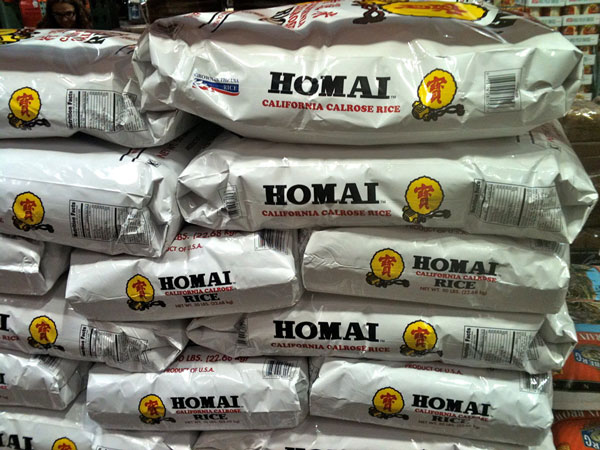 It is very easy for your pho restaurant to over-purchase from your suppliers. For new pho restaurants, when you do not have a track record of how much your daily sales are, it is even harder to know how much you should stock up.
It is very easy for your pho restaurant to over-purchase from your suppliers. For new pho restaurants, when you do not have a track record of how much your daily sales are, it is even harder to know how much you should stock up.
Stocking up for pho is a tricky business. Because of the amount of time involved in making the broth, and the potential quantity of broth you sell per day, you must be ready to make quick and regular adjustments to get what you need. If you run out of broth due to poor planning or unexpected high sales, even if you can get ingredients immediately, you're still hours away from having new broth to serve. That's the reality of it.
Here are a few important things to consider:
- There is no hard and fast rule, and you must stock ingredients according to the way most suitable to your operation and procedures. For example, it makes a big difference if you prepare just enough fresh broth everyday to meet customer demand, versus making much larger amounts but with fewer times per week. Either method requires certain storage that must meet health codes for restaurants. Depending on your concept, you'll choose one way or the other or something in between. In many pho shops even in present-day North Vietnam, only certain amount of broth is made every morning, and the owners close shop when they run out of broth regardless of time of day. Of course this doesn't happen in pho restaurants in the U.S. When you open a pho restaurant, you must have pho to serve during your opening hours.
- With modern equipment and prepping techniques plus North American food safety regulations, you may be forced to make pho in new ways. I know and you know, pho is good in Vietnam. But we also know that U.S. food safety inspectors will not allow you the make pho the way it's made in Vietnam. That is a fact and a reality. Here's an important dichotomy between the old and the new: you want authentic pho but you are running a modern pho restaurant in a modern society with strict health codes. Think about it, even if you learn making pho the old "authentic" way from your grandmother, you may not be able to do (or you should not) continue such method in a restaurant in Los Angeles because you'd be breaking all kinds of codes. All of this impact what you purchase, and how much and how often.
- Regardless of demands, your storage space is the limiting factor in how much and how often you can purchase supplies, for obvious reasons. For a given storage configuration (cooler space, freezer space, and prep area space) you can store and prep only so much at a time. In cases like this, accurate and strict adherence to broth production scheduling, safe food movement and storage, and good inventory practice are the key.
- Purchasing bulk versus smaller amounts obviously influences your purchase schedule. Common logic says that you buy in bulk to save money. But for limited storage space, you'll come out paying less if you buy smaller amounts at a time; of course you still have to buy enough to meet your minimum demands. So here are a few things to keep in mind:
- Buying large quantities gives you lowest per unit cost. But if you have limited storage space and still want to buy bulk, then 1) you'll also be paying your crew's labor to keep moving things around to make room for other things, and 2) you risk not maintaining your food's safe storage temperature,
- If you buy less at a time and more often, you can ensure freshness of your products; just make sure you meet your daily minimum demand.
All of this leads to the next topic: storage, portion and inventory control.
Storage Control, Portion Control and Inventory Control
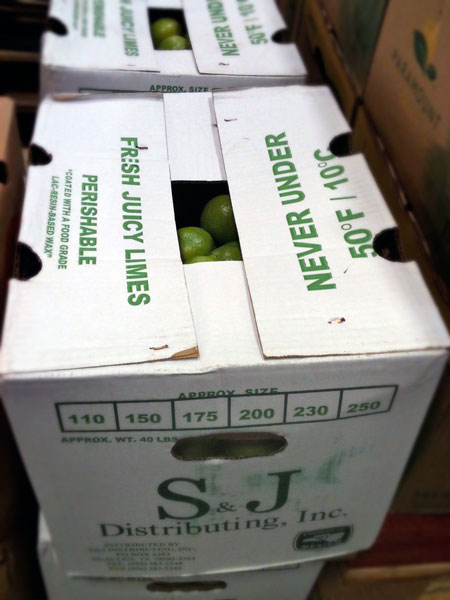 Food cost is one of your biggest expenses in your pho restaurant. It is critical that you have a good storage, portion and inventory system in place. Many restaurants don't do this, which means they have no control of their food costs, or even know what their foods are costing them. Here are some reasons that may cause runaway food costs:
Food cost is one of your biggest expenses in your pho restaurant. It is critical that you have a good storage, portion and inventory system in place. Many restaurants don't do this, which means they have no control of their food costs, or even know what their foods are costing them. Here are some reasons that may cause runaway food costs:
- Improper or nonexistent recording and inspection during delivery,
- Employee theft,
- Food waste during prep,
- Food spoilage in storage,
- Over-portioning during service,
- etc.
Your control system must involve both proper training of your crew and their proper implementation of the tools provided to them. Here are some specific things to pay attention to in each area:
- Storage control means proper receiving, storage, movement, and labeling of your foods as they are moved around within your facility by your crew from the receiving doors to the customer's tables. If you don't control this at every touch point, you don't know what you initially received, what you use during prep, what you throw away, and what you end up with on the customer's plate/bowl. It's very easy to forget something in storage and they spoil, or over-trim or over-cut something in prep that results in your having smaller yield than you should have.
- Portion control is the final stage when specific amount of prepared ingredients/foods go on a plate to the customer. This is called final plating of ready-to-serve food, and it has the highest dollar per unit cost because it has gone through many prep steps and associated labor. For this reason, over-portioning can cost you more per pound than in any previous stage of your food. Think about it, a 1 ounce of sliced cooked beef flank that's ready to go into a bowl of pho actually costs more than 1 ounce of raw un-prepped beef flank that's just been delivered. You should do this calculation yourself and understand the costs at each stage of your food's processing/movement.
- Inventory control is the accounting of what you have in a given location at any time. With a system in place and proper, regular use of inventory control, you can identify problems and fix them early. Late identification of problem and slow implementation of fixes both contribute to higher food losses, and costs.
The Bottom Line: You Should Know What Your Ingredients Really Cost You
Among many things an owner has to deal with everyday, controlling food costs should be at the forefront of your attention.
Of course it's not easy, otherwise everyone would be doing it successfully. But with some attention to details and a tough stand on implementing a system and following through with it throughout your restaurant, you can do it and it will actually get easier over time. And you will definitely see the difference in your bottom line.
Just remember, design your operation and train your crew to follow established procedures to protect your ingredients. Your customers will love the freshness in your pho, and you and your accountant will love your bottom line.
Please leave a comment or share your ideas below.
For help with your pho restaurant, book a one-hour pho restaurant consultation and get your questions answered.

